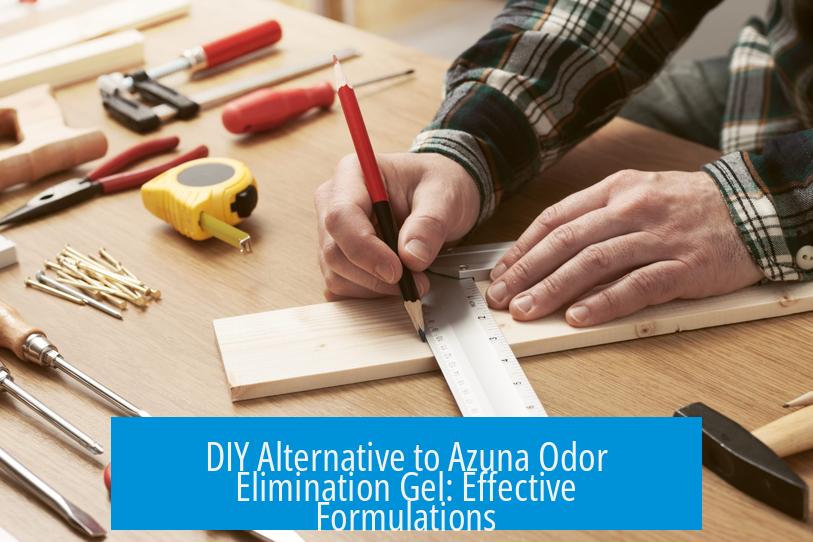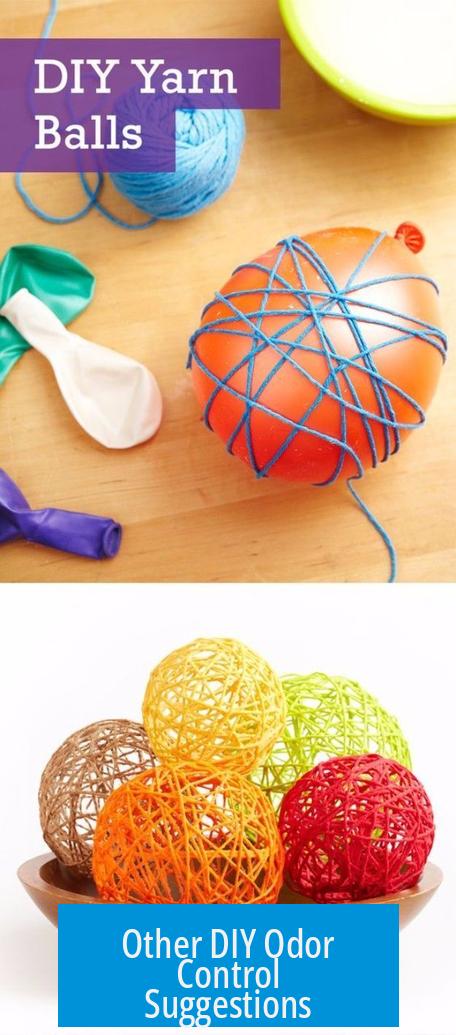DIY Alternative to Azuna Odor Elimination Gel: Effective Formulations

An effective DIY alternative to Azuna (odor elimination gel) relies primarily on tea tree oil as the active antimicrobial ingredient, combined with a suitable gel binder such as pectin or mucilage, creating a pourable gel. This formulation leverages tea tree oil’s antimicrobial properties to kill odor-causing microbes, thus eliminating odors by targeting their source instead of masking them.
Understanding Azuna’s Active Ingredient and Mode of Action
Azuna gel’s key to odor elimination lies in tea tree oil, a natural antimicrobial chemical. It works by killing microbes that produce foul odors. Household smells often originate from microbes breaking down skin oils, hair, and dead skin cells, releasing unpleasant gases as byproducts.
- Tea tree oil kills these microbes, removing the source of odor temporarily.
- Tea tree oil is heavy and adheres to surfaces, maintaining its antimicrobial action longer than common sterilizers that evaporate quickly.
This residual effect distinguishes Azuna’s approach from simple air fresheners, which mask smells without addressing microbial growth.
Natural and Industrial Alternatives to Tea Tree Oil
For DIY formulations, tea tree oil remains the most accessible natural antimicrobial option. However, alternatives like clove oil and grapefruit seed extract can provide some odor control but tend to be less potent.
Industrial antimicrobials offer stronger action but may not suit home use:
| Antimicrobial | Usage | Notes |
|---|---|---|
| Benzalkonium Chloride | 0.5-3% in soap, cleaners | Powerful, available in hardware anti-mold products; leaves protective residue |
| Sodium Benzoate | Low pH preservatives | Food safe but specific pH dependent |
While effective, these chemicals are less suited for DIY gels intended for indoor air quality and may require caution.
DIY Gel Formulation Components

To replicate Azuna’s gel, the formulation needs three main components:
- Antimicrobial agent: Tea tree oil (essential oil concentration generally under 1% to avoid irritation)
- Gel binder: Pectin, mucilage, or potato starch to create a stable, pourable gel that holds the essential oil
- Water phase: Helps dissolve binders and disperses oils
A typical preparation could involve dissolving the gel binder in warm water, adding a small amount of vodka or alcohol as a preservative and solubilizer, then blending in tea tree oil and other essential oils.
Sample DIY Odor Elimination Gel Recipe
- Heat 0.5 cup of water until warm but not boiling.
- Stir in 1 teaspoon of pectin (or equivalent mucilage) until fully dissolved.
- Add 0.5 cup of cool water to cool down the mixture gently.
- Mix in 1/8 teaspoon vodka to help preserve and disperse oils.
- Add 5-10 drops of tea tree oil; stir thoroughly to blend.
- Optionally, blend with other essential oils (e.g., eucalyptus or lemon) for enhanced scent and antimicrobial range.
- Pour into small jars and allow gel to set for several hours.
This gel gradually releases antimicrobial compounds into the air, reducing microbial growth and the resultant odors.
Other Essential Oil Combinations for Air Fresheners
Blending oils can also add fragrance and antimicrobial benefits:
- Lime & Peppermint: “Mojito” scent, fresh and stimulating
- Lemon & Lavender: Calming and purifying
- Citronella & Lemongrass: Repels insects while deodorizing
- Rosemary & Eucalyptus: Invigorating and antimicrobial
These combinations can be added safely up to 1% dilution in the gel base.
Other DIY Odor Control Suggestions

Besides gel formulations, natural deodorizing options include:
- White vinegar sprays to neutralize odors chemically.
- Diffusing grapefruit essential oil or other citrus oils for freshening and mild antimicrobial effects.
- Regular cleaning with antimicrobial solutions to remove microbial food sources.
Since odors stem from microbial activity, direct killing or inhibition of microbes provides the longest-lasting odor control rather than masking scents.
Effectiveness and Limitations
While DIY gels with tea tree oil provide antimicrobial odor control, their effectiveness depends on formulation quality and sustained release of active compounds. They may require periodic reapplication as microbes recolonize.
More potent preservatives like formaldehyde substitutes or industrial antimicrobials can offer stronger, long-term inhibition but may pose safety risks or complexities for household use.
Therefore, DIY solutions strike a balance between safety, accessibility, and moderate antimicrobial action—suitable for typical household odor elimination needs.
Key Takeaways
- Tea tree oil is the primary active antimicrobial ingredient in Azuna gel alternatives.
- Gel binders such as pectin or mucilage provide texture and controlled release of oils.
- DIY gel preparation involves blending essential oils in a water-based gel with small amounts of preservative like vodka.
- Alternative essential oils can enhance fragrance and antimicrobial effects but remain less potent than industrial chemicals.
- Regular cleaning and microbial source removal complement gel use for sustained odor control.
- Industrial antimicrobials offer stronger effects but are less suited for DIY household applications.
The Ultimate DIY Alternative to Azuna Odor Elimination Gel: Formulations That Work

Looking for an effective DIY alternative to Azuna (odor elimination gel)? The key is in harnessing the antimicrobial power of tea tree oil combined with a trusty gel binder like pectin or mucilage, which gives you that gel texture Azuna boasts. This combo tackles odors at their source, not just masking them.
Let’s break down why Azuna gels work and how you can replicate that magic at home, without paying a premium or waiting for your gel to turn an unappetizing brown after a few months.
What Makes Azuna Tick? The Science Behind the Scent
Azuna’s secret weapon is tea tree oil, a potent antimicrobial agent. This oil doesn’t just cover up smells; it stops the tiny culprits—the microbes—that produce them. These microscopic dwellers feast on leftover food particles, dead skin cells, and oils scattered around your house. They then emit odors as a byproduct, essentially farting out what we perceive as bad smells.
Tea tree oil fights back by killing or halting these microbes. Unlike many quick-evaporating disinfectants, tea tree oil is a “heavy oil” meaning it settles on surfaces and sticks around long enough to work its magic. This sticky residue contributes to sustained antimicrobial protection, unlike most sterilisers that disappear before you even blink.
So when you use a gel infused with tea tree oil, you’re spreading an invisible antimicrobial shield that’s continuous—stopping the smell factory by shutting down the workers.
The DIY DIY: Formulating Your Own Gel
Replicating Azuna’s gel at home isn’t rocket science. It involves a few key ingredients:
- Tea tree oil: the star antimicrobial actant
- Gel binder: think pectin (from fruit), mucilage (plant gums), or potato starch
- Water & optional additives: some DIY recipes add vodka as a preservative and scent modifier; you can also add complementary essential oils
Here’s a straightforward formulation:
- Heat 1/2 cup of water to a boil.
- Dissolve 1 packet of unflavored gelatin or 1 teaspoon of pectin/starch/mucilage into the hot water. Stir until smooth.
- Mix in the other 1/2 cup cool water to bring the volume to 1 cup.
- Add 1/8 teaspoon of vodka (optional, for preservation) and 1/2 teaspoon tea tree oil.
- Stir thoroughly and pour into small clean jars or containers.
- Let the gel set for several hours.
This basic gel does the antimicrobial work and holds the tea tree oil in place, ensuring it slowly evaporates to cleanse your air over time.
But Wait… Can You Go Beyond Tea Tree Oil?

Absolutely! If you’re curious about mixing it up or wanting stronger antimicrobial power, consider these alternatives:
- Benzalkonium chloride: The industrial champ, found in hand soaps and cleaners. It delivers fierce, long-lasting antimicrobial effects—not a typical DIY ingredient but available in some hardware cleaners.
- Clove oil and grapefruit seed extract: Popular natural antimicrobials with gentler action, suitable for homemade air fresheners when tea tree oil isn’t your favorite.
Pro tip: While natural essential oils provide decent antimicrobial benefits, they’re often weaker than industrial chemicals. A balance depends on your priority between natural and powerful.
Adding Custom Essential Oils for Scent and Boost
Want your home to smell like a forest spa or a tangy citrus grove instead of just medicinal tea tree? Mix tea tree oil with these complementary essential oils for added zing:
- Mojito: Lime + peppermint
- Breath of Fresh Air: Spearmint + peppermint
- Spa Day: Rosemary + eucalyptus
- Happy Holidays: Thieves essential oil blend
- Don’t Bug Me: Citronella + lemongrass (bonus insect repellent!)
Mix roughly 1 part tea tree oil to 1 part of your chosen scent for balance. Too much essential oil can irritate sensitive noses, so start small.
Why Not Just Mask Odors with Sprays or Candles?
This is where DIY antimicrobial gels shine. Most air fresheners just camouflage odors with fragrances but leave microbes to multiply. Azuna-style gels and our DIY version actually address the microbial source, giving you a real fresh start.
The gel format also slowly releases oils over time rather than blasting a room with fragrance all at once. This creates a natural, gentle atmosphere instead of an overpowering scent cloud.
Storage and Shelf Life: Keeping Your Gel Fresh

The flip side of tea tree oil is that it can cause your gel to turn brown over time—Azuna’s gel reportedly does this after a few months. This is a natural oxidation process and doesn’t mean the gel is ineffective or unsafe.
Storing your DIY gels in a cool, dark place can slow discoloration. If you want longer shelf life, consider adding preservatives like sodium benzoate (works best at low pH) or small amounts of vodka as above.
Final Thoughts: Is Your DIY Gel Up to Snuff?
To summarize:
- Tea tree oil is a proven antimicrobial that tackles odors at the source
- Gel binders like pectin or mucilage hold the formula in gel form and control release
- Complementary oils add delightful scents without masking microbial activity
- Industrial options exist but may be less accessible or natural
- Your gel might change color with time—this is normal, not dangerous
Ready to mix your own? Here’s a quick DIY gel odor eliminator recipe again to get you started:
| Ingredients | Quantity |
|---|---|
| Water | 1 cup (split in two halves) |
| Gelatin (or pectin/mucilage) | 1 packet or 1 tsp |
| Tea Tree Oil | 1/2 tsp |
| Vodka (optional) | 1/8 tsp |
| Optional essential oils (citrus, rosemary, peppermint, etc.) | 1/2 tsp total |
Boil half the water, dissolve gelatin/binder, mix in rest of the water, add oils and vodka, pour, and let set!
Give it a try and ask yourself: Do I want to just cover odors or actually stop their microbial source? This method is firmer ground than masking with fruity sprays—and a great way to show off your DIY skills.
Got a favorite scent combo or a tweak that worked for you? Share it! Odor control is part science, part art, and now, part your homemade gel.
What is the main active ingredient to use in a DIY alternative to Azuna odor elimination gel?
Tea tree oil is the key active ingredient. It works as an antimicrobial agent to kill odor-causing microbes on surfaces and in the air. Its heavy nature helps it stay effective longer than some chemicals.
How can I create a gel texture for homemade odor elimination gel?
Use natural binders like pectin, mucilage, or potato starch. These plant-based polymers create a pourable gel, holding the essential oils and active ingredients together.
Are there effective natural substitutes to tea tree oil for DIY odor gels?
- Clove oil and grapefruit seed extract both offer antimicrobial properties.
- They are milder but still help reduce microbes causing odors.
- For stronger action, industrial chemicals like benzalkonium chloride work well.
Can I make a DIY gel air freshener similar to Azuna with common kitchen ingredients?
Yes. Combine gelatin, water, a small amount of vodka, and essential oils like citrus or pine. Let it set in small jars to create a fresh-smelling gel you can place around your home.
Are DIY odor gels as effective as commercial products like Azuna?
DIY gels may help reduce odors but might not last as long or work as strongly as some commercial options. Using preservatives or industrial antimicrobials can improve effectiveness but trade off natural ingredients.





Leave a Comment